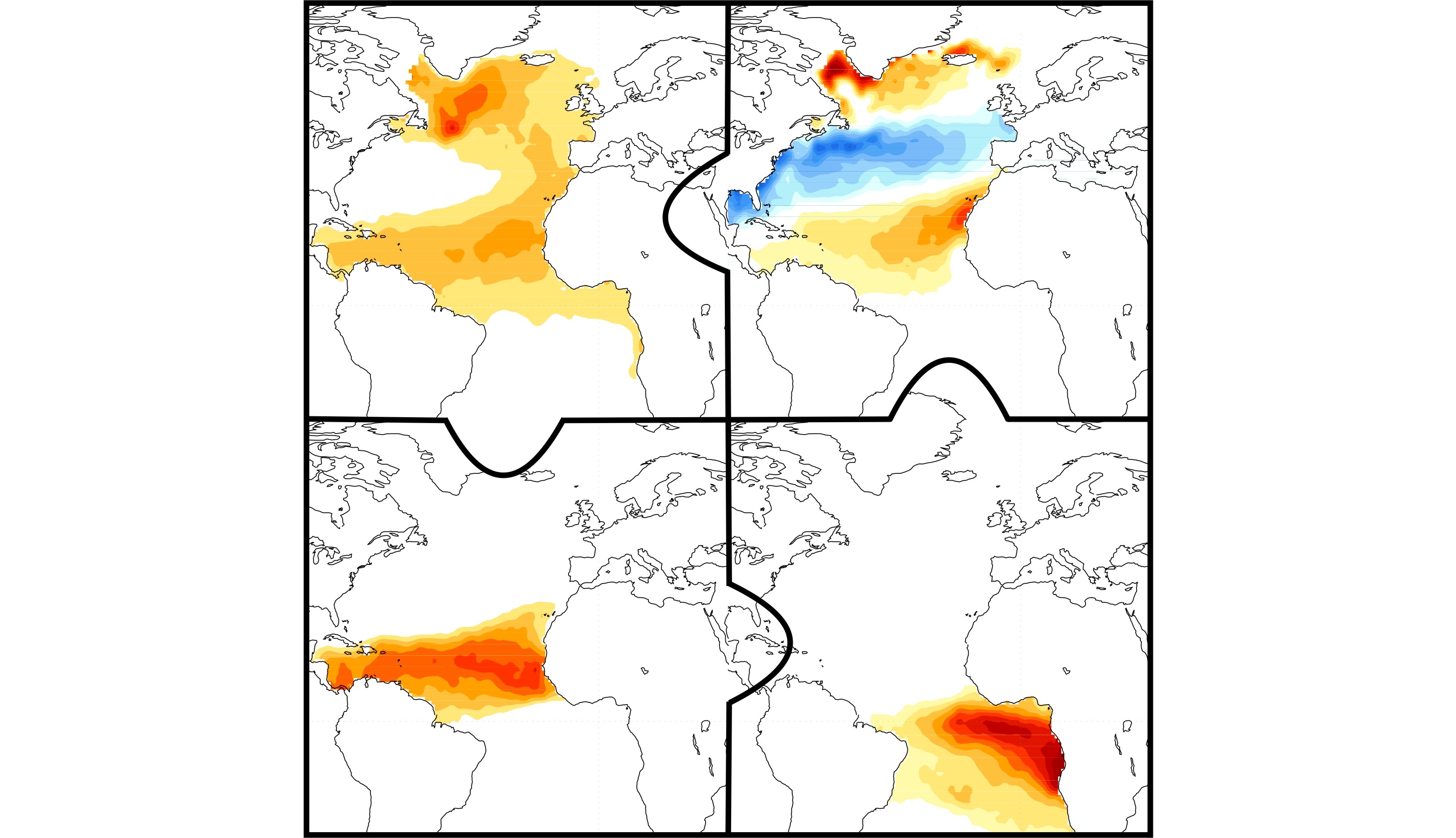
Changes in Atlantic sea surface temperature have the potential to influence coastal and inland climate variability (e.g. hurricanes, heat waves) and to impact society-relevant activities over the ocean (e.g. fishery). Efforts at BSC-ES deal with better understanding its predictability sources and impacts.
Summary
Nowadays the ocean is no longer seen as a passive agent suffering the changing weather, but as an integrator of it that feedbacks onto the atmosphere and indeed provides memory to the system thanks to its longer persistence.
The Atlantic Ocean is a complex water mass system that largely contributes to weather and climate conditions in the surrounding continents, particularly in the tropical band and at middle-to-high latitudes. Its variability ranges multiple timescales.
At short term, seasonal-to-annual, variations in the tropical Atlantic are dominated by the Atlantic Niño - leading variability mode of sea surface temperature (SST) in the equator that is strongly coupled to deep convection, the trade winds and subsurface oceanic processes; whereas variations in the extratropical Atlantic are dominated by the tripolar SST fingerprint of the North Atlantic Oscillation (NAO) - leading mode of atmospheric variability in the Euro-Atlantic sector. ENSO – El Niño/Southern Oscillation – in the tropical Pacific, main mode of global variability, has a robust influence on the subtropical North Atlantic. Many scientific questions concerning these linkages and their simulation remain however unresolved to date.
At long term, annual-to-decadal, the ocean dynamics gains special relevance. The wide SST signature of the North Atlantic multi-decadal variability, also known as the Atlantic multi-decadal oscillation (AMO), is thought to be related to multi-decadal variations of the Atlantic meridional overturning circulation (AMOC) – the Atlantic part of the thermohaline circulation. High prediction skill of the AMO on multi-year timescales has been found, although the role played by external radiative forcing has not been clearly identified so far. AMOC skill is more challenging due to the scarcity of observational data. Likewise, the AMO-AMOC relationship is still controversial.
Objectives
Under different national (RESPONS, DANAE) and international (FP7 PREFACE, H2020 DPETNA) projects, BSC-ES tries to advance understanding of the simulation and prediction of Atlantic SST at seasonal-to-decadal timescales, undertaking the following main research topics:
- investigate the causes of model biases and work towards their elimination
- gain dynamical insights into the mechanisms underlying variability and impacts
- improve seasonal-to-decadal forecasts of Atlantic SST and related phenomena
